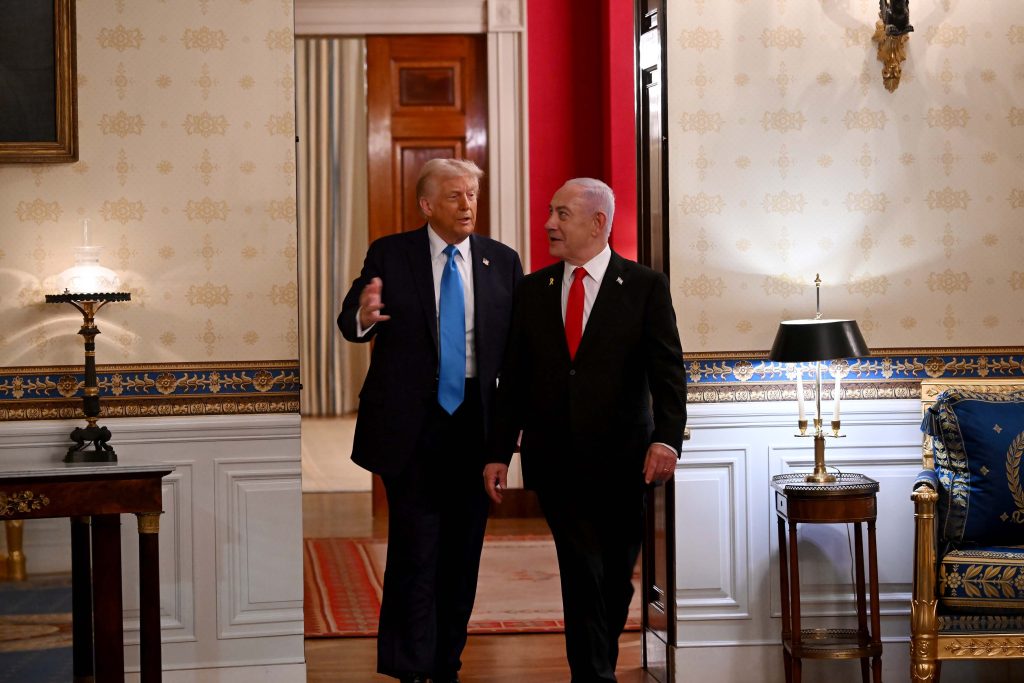
When President Donald Trump declared he was “not too much in the mood to negotiate” with Iran, it was more than a political soundbite. It was a strategic signal – carefully crafted to project dominance, reframe the negotiation, and apply pressure at a pivotal moment.
This wasn’t a threat. It was a message – designed not just for Iran, but for a global audience, for domestic constituents, and for anyone trying to read the power map in real time. While missiles are flying and lives are at risk, the strategic use of negotiation signals becomes sharper, bolder, and more consequential.
For business leaders watching from afar, this moment also offers something more valuable: a rare real-time case study in executive-level negotiation under complex conditions.
What can we learn from President Donald Trump that can be useful in the business arena?
In this article, we’ll unpack seven critical negotiation insights drawn from Trump’s statement – each with clear relevance for business leaders:
- How coalitions quietly reshape negotiation dynamics
- How behind-the-scenes orchestration builds the strongest negotiating positions
- How to project power through tone, timing, and credibility
- When it’s smart to say “take it or leave it” – and when it backfires
- Why real leverage often comes from what’s happening around you, not what you say
- Why unpredictability can cost you trust – even when you hold power
- How crisis redefines the negotiation frame – and the rules of engagement
Let’s examine how these dynamics work – and why they matter deeply for business leaders navigating complex, high-stakes negotiations.
1. Coalitions as Leverage: How Israel Amplified U.S. Power
Trump’s message did not emerge in a vacuum. It came while Israel is deeply engaged in battle. The U.S.-Israel alignment isn’t theoretical – it’s visible, active, and loud.
Beyond Israel’s military actions on the ground, what truly amplifies the strategic weight of his statement is the long-standing alliance between the U.S. and Israel.
In negotiation terms, this is coalition strategy at its most potent.
Coalitions:
• Increase perceived inevitability
• Send coordinated pressure from multiple directions
• Raise the cost of opposition
Strategic alliances aren’t only for market share – they’re for negotiation power.
In executive negotiations, bringing a trusted partner to the table – or even subtly signaling alignment with a larger group (such as regulatory bodies, investment coalitions, or industry alliances) – can shift the perception of power, authority, and inevitability.
In this case, Iran may be negotiating with the U.S. but it hears Israel. That unspoken presence shapes urgency, tightens the window for maneuvering, and increases the perceived cost of resistance.
Coalitions don’t have to be formal to be effective. They simply need to be visible, aligned in tone, and relevant to the outcome.
2. Shaping the Stage: How Leaders Build Negotiation Reality
Here lies the most revealing lesson of all: Trump’s statement wasn’t just reactive – it was part of a deliberate backstage orchestration. As Israel fought for six days, dominating headlines and rallying global attention, Trump didn’t merely leverage the moment. He helped curate it.
This isn’t passive timing – it’s active framing.
The war, the images, the urgency – all created a high-pressure backdrop that made his “no mood to negotiate” position sound less like a choice and more like a fact. The choreography was subtle but potent: while Israel engaged on the ground, the U.S. set the tone above it.
For executives, this is more than a geopolitical insight – it’s a negotiation blueprint:
Strategic players don’t wait for optimal conditions. They build them. Quietly. Deliberately. Behind the scenes.
In business, you can shape the environment around a negotiation by aligning milestones, managing communications, activating allies, and creating urgency. Done well, this behind-the-scenes management makes your negotiation position look not only powerful — but inevitable.
• Launch your message when the market narrative supports it.
• Align your stakeholders so your position is reinforced from every angle.
• Time your demands when the pressure is peaking — not easing.
This is how real leverage is built: not just by playing the game, but by designing the arena
3. The Power Behind the Message: When Reality Creates Leverage
Trump’s declaration lands differently today than it might have a week ago. Israel is no longer preparing; it is acting. The region isn’t tense; it’s in conflict. And in this new landscape, Trump’s posture gains force.
His message transmits three layered signals:
• Power: “We are acting now. You can join the terms or be left behind.”
• Time Control – “I won’t wait forever.” He introduces scarcity – not of the deal, but of his willingness to engage. Time becomes a weapon.
• Reputation – “I don’t backtrack.” The tone protects credibility. Backpedaling now would carry a high reputational cost, making the threat real.
These aren’t only theoretical postures. They’re credible because the war gives them weight. In business, the same principle applies: your words gain strength not only from what you say, but from the reality surrounding them.
4. Negotiating During – Not Before – Conflict
In negotiation theory, it’s often assumed there’s time to talk. But sometimes, the negotiation continues during the fire – not before it. That’s exactly what we’re witnessing now.
Trump’s tone is not speculative; it’s strategic. He knows that the war between Israel and Iranian-backed forces reshapes leverage. It limits Iran’s options and increases U.S. bargaining power – not because of what the U.S. threatens, but because of what’s already happening on the ground.
This is negotiation through action, not intention.
In business terms: when market conditions, regulatory shifts, or competitor moves tilt the playing field, timing your “non-negotiable” demands to coincide with those shifts can be your strongest move.
5. When You Can Afford to Say “Take It or Leave It”
In both diplomacy and business, refusing to negotiate is a high-risk move that must be earned. It is not rooted in emotion – it’s rooted in leverage.
To make a non-negotiable demand and have it hold, at least three conditions must be true:
A. Clear Strategic Superiority
You control a critical resource, opportunity, or position – one the other side can’t easily replace.
B. Credible Consequences
The downside of non-agreement for the other side must be real, immediate, and worse than your deal.
C. Favorable Contextual Pressure
External events must align in your favor, creating urgency or fear of missed opportunity.
And this is where Israel enters the negotiation picture.
Israel’s targeted strikes in Iran dramatically altered the risk landscape, raising the stakes and reducing Iran’s room to maneuver. Without lifting a finger, Trump’s firm position gained external validation – an example of indirect leverage at its finest.
6. The Cost of Unpredictability: When Power Undermines Trust
While Trump’s tone and timing aligned well with the conditions for a firm stance, there’s another element worth considering – his unpredictability.
Trump’s negotiation persona has often been described as disruptive, nonlinear, and highly reactive. While this can create tactical surprise, it also undermines one of the most critical currencies in negotiation: trust.
From a business perspective, unpredictability can:
- Destabilize long-term partnerships
- Increase perceived risk on the other side
- Trigger defensive behavior, rather than cooperation
Even when holding power, erratic behavior can dilute your leverage, especially in ongoing negotiations or when future interactions are expected. Partners may hesitate to commit, delay decision-making, or seek alternative alliances – not because the deal isn’t good, but because the person on the other side feels unreliable.
For executives, the lesson is clear: Power is persuasive – but only when paired with consistency, clarity, and credibility. Without them, what you gain in pressure, you may lose in trust.
7. When Crisis Becomes the Stage: Leveraging Turbulence to Your Advantage
It’s no longer about reaching a mutual understanding – it’s about survival, positioning, and controlling the narrative.
In such an environment, every statement becomes a negotiation move, whether or not it invites response.
For business leaders, this is a reminder: Context isn’t the backdrop of your negotiation – it defines it.
Your strategic stance must leverage what’s unfolding right now – even if it’s a sharp crisis or a dramatic shift.
Whether it’s a market crash, internal upheaval, or regulatory disruption, the current reality isn’t just a challenge.
It’s also an opportunity to shape your message, and to choose when and how to deliver it to serve your objectives.
Strategic leaders don’t just shape reality – they use it as leverage.
They maneuver through the moment, lead through disruption, and strengthen their position by turning volatility into advantage.
Final Word: Build the Stage Before You Step Into the Spotlight
Trump’s message grabbed headlines, but its real power came from the strategy behind it: sharp timing, credible leverage, and deliberate alignment with Israeli pressure.
In negotiations – as in leadership – it’s not the message alone that matters. It’s the structure that surrounds it.
Trump’s negotiation stance isn’t just a tactic – it’s a response to a world in motion. Executives shouldn’t imitate his style, but they should study his timing, framing, and behind-the-scenes construction of reality.
When you speak, do it in sync with the forces already moving.
When you take a stand, ensure the world around you echoes it.
And when you build leverage, don’t wait for calm – build your leverage inside the storm.
In high-level business negotiations, the same principle applies.
It’s not just about what you say – it’s about how, when, and within what system you say it.
The best negotiators – political or business – don’t wait for opportunities.
They create them in real time.
Yael Chayu is a globally expert in complex, high-stakes business negotiations. She advises companies like Gartner, Oracle, AWS, SAP, Dell, and Pfizer. A keynote speaker and academic director of the Business Negotiation Program at Reichman University.
Forbes Israel Contributors are independent writers selected by the Forbes editorial team, experts in their fields, providing current commentary and reviews in their area of expertise. The content is their own and under their responsibility and is not sponsored content.





